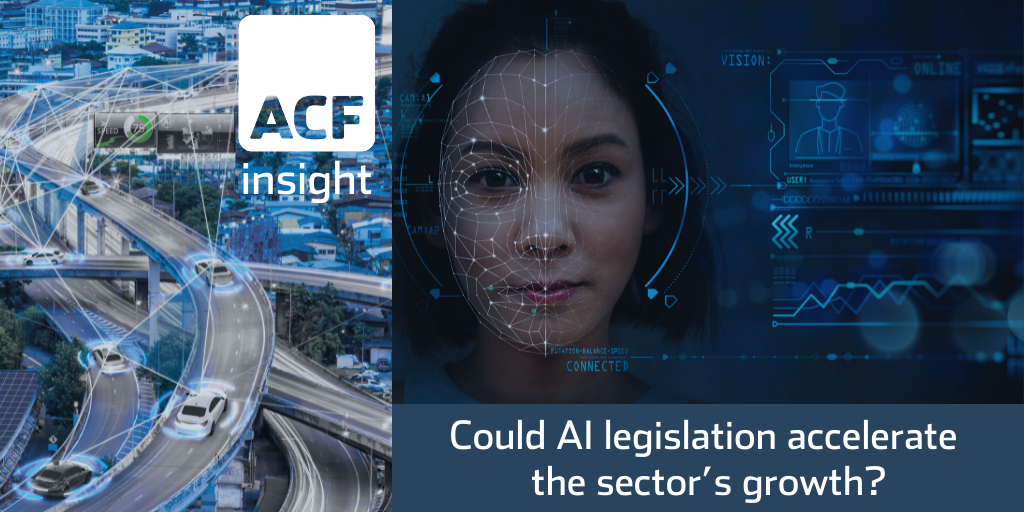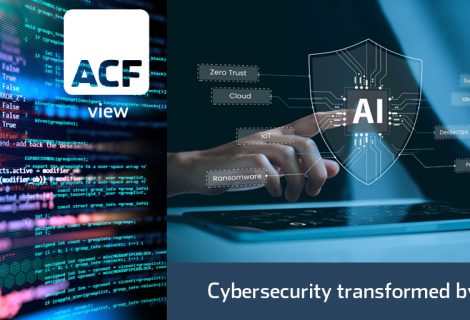The global impact of AI legislation
AI is heading towards a regulated environment. EU plans to legislate for the use of AI is likely to become reality by 2023. We examine some dynamics and drivers and provide an initial ACF forecast for AI facial recognition in this analysis.
- The new EU rules on AI are an attempt to address potential and actual human rights risks created by AI applications and the use of AI by public authorities. The EU is planning to build a list of high-risk AI applications (e.g. live facial recognition and credit scoring) and define specific obligations regarding their development and usage.
- The EU’s strategy is to make the EU trading block a “technological superpower” – as part of this strategy the EU intends to be the first global bloc with core AI regulations, aimed at maintaining fundamental human rights. Perhaps emboldened by the de-facto global standards generated by the EU’s MiFID II instrument directed at financial markets, the EU seems to be hoping that its AI legislation will also become a de-facto global set of standards.
- Leading a global standards or regulatory movement conveys, tried, tested, competitive and economic advantages.
- The EU is simultaneously aiming to reassure innovative small and medium enterprises (SMEs) that they will not be hindered by any new AI regulations. The bloc plans to add specific measures called “sandboxes” which will enable SMEs to develop AI technologies without sanction.
AI legislation is controversial. The EU claims its planned AI legislation proposal will not affect SME development. Yet as the human factor is at AI regulation’s core it suggests that legislation will impact the ‘S’ (social) in ESG and as such will raise the costs of compliance (though it may also serve to enhance economic value add (EVA), by way of compensation or indeed net uplift).
Metrics demonstrating that human rights are enshrined makes companies more attractive to employees, increasing competition for jobs at such firms, in turn helping restrain wages whilst increasing attraction to a global talent pool – ceteris paribus, leading to an uplift in EVA.
The first sectors that we assess will mostly likely be directly impacted by AI regulations regarding, for instance, facial recognition, automotive travel and private healthcare. These industries are either using or could potentially incorporate AI facial recognition technology in their devices and facilities.
For example, the automotive sector could potentially introduce in their vehicles AI facial recognition technology for access, security and starting a car, along with fingerprint technology rather than keys. There may be benefits for insurance companies facing fewer theft claims or by using individual driver records to tailor insurance premiums.
It is conceivable that AI technology could be implemented in future to reduce accidents between road vehicles and pedestrians. AI could be used to examine pedestrian expressions, determining their intentions whilst the driver is focusing on the road. Again, something that might be profitable for insurance companies as well as for the automotive industry.
The benefit for drivers of such pedestrian prediction applications could be a return to higher speed limits in urban and suburban driving environments (in time and with sufficient supporting safety/effectiveness data).
In the travel sector, aviation is the obvious target for AI regulations. Facial recognition technology is already popular with airport authorities.
Surfshark, a VPN provider promoting the security of VPN, claims that 98 countries use facial recognition, 12 have approved it but not implemented it and a further 13 are considering approving facial recognition, leaving 68 countries in which Surfshark has failed to find evidence of the use of AI facial recognition.
With respect to the private healthcare sector, AI has the widest range of applicability. Facial recognition has the potential to be adopted in a variety of areas. These could include access control to medical facilities, matching patient records, and perhaps further down the road, robotic nurses.
The global AI facial recognition market will be driven by improvements in the technology and rapid evolution of uses across a wider range of sectors from mining to leisure (as per exhibit 1 below).
ACF’s somewhat conservative forecast over the next decade is for a rapidly growing a multi-billion-dollar market.
In 2020 the AI facial recognition market was estimated to have reached US$ 3.8bn (see exhibit 1 below).
Exhibit 1 – The forecast for the global AI facial recognition market size between 2019A-2030E
 Sources: © ACF Equity Research, Markets and Markets, Grand View Research
Sources: © ACF Equity Research, Markets and Markets, Grand View Research
ACF’s relatively modest growth projection for the global AI facial recognition market develops over two phases. In the first phase ACF’s investment research estimates the market will grow to US$ 6bn by 2023 at a CAGR of 18.5% driven by wide demand for a new useful but poorly regulated technology as companies and governments explore as many roles and systems as possible. This strong initial growth phase will reduce once effective legislation is introduced.
In our second growth phase we expect the market for AI facial recognitions to decelerate by ~2% to reach a 7-year CAGR of 16% and market value of US$ 18.4bn by 2030.
Beyond our 10-year horizon and in time we expect the AI facial recognition market to become a trillion or multi-trillion-dollar market – regulation or no regulation.
Author: Anda Onu – Anda is part of ACF’s Sales & Strategy team. See Anda’s profile here
















